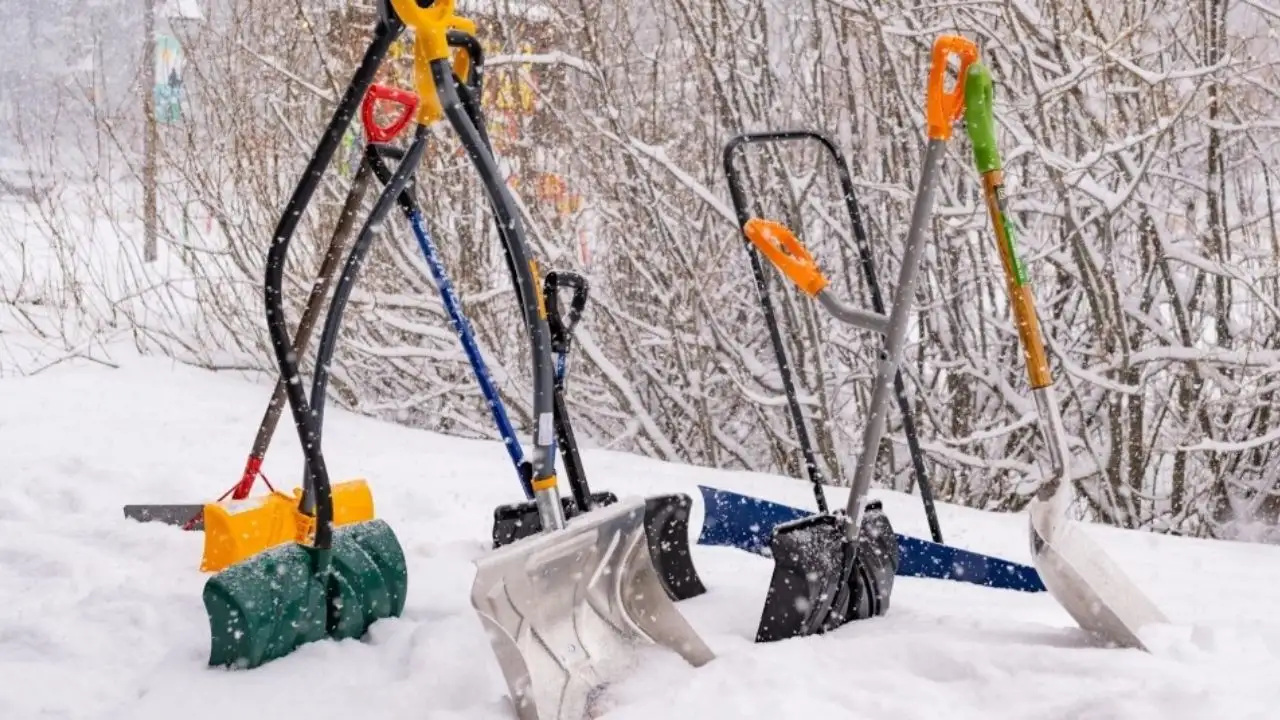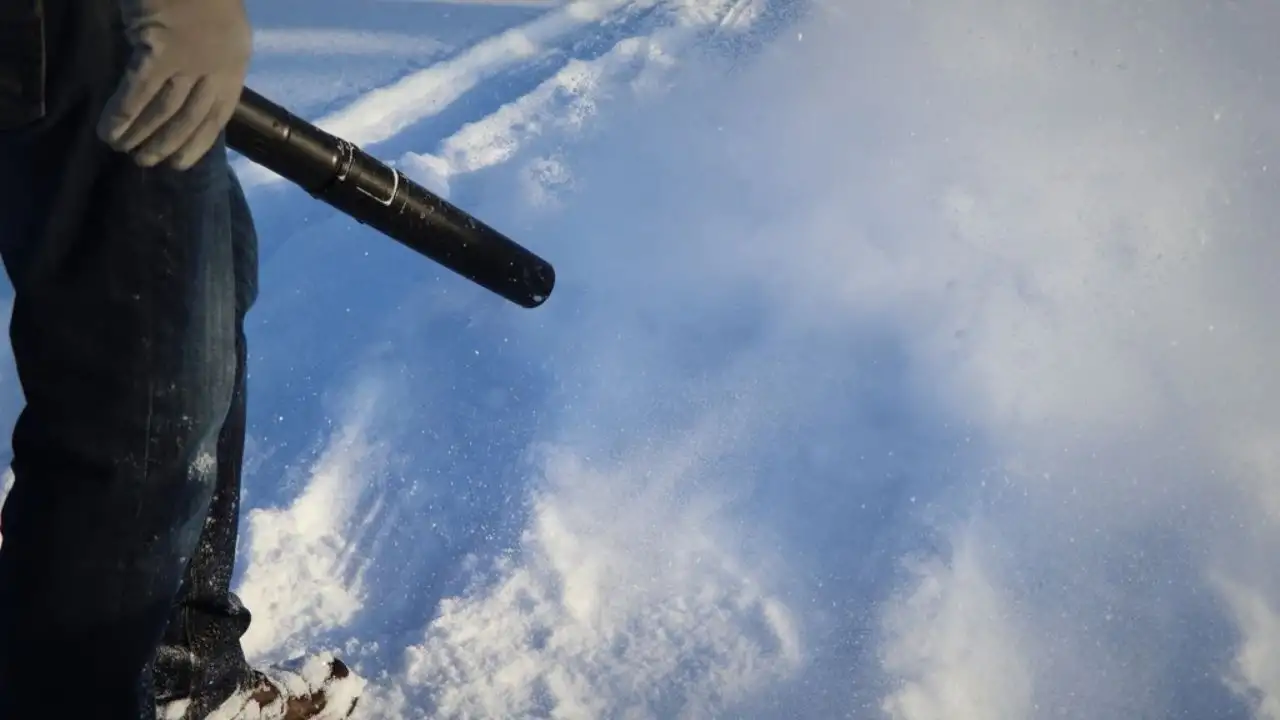So, how does the humble leaf blower stack up against this colder foe, and what do you need to know before grabbing your leaf blower and getting started? Let Garden Nurturer delve into the nuances of this winter gardening challenge.
Can leaf blowers remove snow?
Leaf blowers can remove light and dry snow from driveways, sidewalks, and vehicles. However, their effectiveness is limited by a few factors:
- Type of Snow: Leaf blowers are most effective on light, powdery snow. Wet, heavy, or compacted snow is too dense for a leaf blower to move effectively.
- Snow Depth: They work best on a thin layer of snow. A few inches of light snow can be cleared, but deeper snowfalls will likely require a shovel or snow blower.
- Surface Area: Leaf blowers are suitable for small to medium-sized areas. Large areas might be more efficiently cleared with a snow blower.
- Temperature: In icy conditions, snow can become icy and stick to surfaces, making it harder to remove with a leaf blower.
- Type of Leaf Blower: Powerful gas-powered blowers are more effective at moving snow than less powerful electric models.
Remember, while leaf blowers can be a quick solution for light snowfall, they are not a substitute for a proper snow blower when dealing with larger snow removal tasks.

How do you use a leaf blower to remove snow?
To use a leaf blower to remove snow, follow these detailed steps:
- For snow removal, a powerful gas-powered leaf blower is usually more effective than an electric one. It should have high air volume and velocity.
- Leaf blowers are most effective on light, dry, and powdery snow. They are less effective on wet, heavy, or compacted snow.
- Before you start, remove any large objects from the area that might obstruct the blower. This includes toys, branches, or stones.
- Wear warm clothing, gloves, and protective eyewear. Snow can blow back towards you, and protecting yourself from the cold and flying debris is essential.
- Follow the manufacturer’s instructions to start your leaf blower. Ensure it’s running smoothly before you begin the snow removal process.
- Hold the leaf blower nozzle close to the ground at a slight angle. Begin at one edge of the area and work across, blowing the snow toward the direction you want it to accumulate. Avoid blowing snow against the wind.
- Be mindful of where the snow is going. Avoid blowing snow onto roads, other people’s property, or vehicles.
- If the snow is deep, you should make several passes. Start from the top layer and gradually work your way down.
- Once you have cleared the snow, please turn off the leaf blower and store it according to the manufacturer’s instructions. Clear any snow from the blower itself to prevent damage.
Remember, the effectiveness of a leaf blower for snow removal depends significantly on the type and condition of the snow and the power of the blower.
How is a leaf blower better than a shovel?
Using a leaf blower for snow removal has several advantages over using a shovel, particularly under the right conditions. Here are some key benefits:
Speed and Efficiency
A leaf blower can clear an area much faster than shoveling for light, powdery snow. This is especially true for expansive areas like driveways and decks.
Reduced Physical Strain
Using a leaf blower requires less physical effort than shoveling. It’s less taxing on the back and shoulders, which benefits individuals with physical limitations or who want to avoid the strenuous activity associated with shoveling.

Ease of Use
Operating a leaf blower is generally straightforward and doesn’t require the technique or physical exertion of shoveling. This can make it a more accessible option for many people.
Avoiding Overexertion
Shoveling snow is a common cause of winter-related injuries and health issues, including heart strain. A leaf blower can clear snow without these risks, providing a safer alternative for those concerned about overexertion.
Versatility
A leaf blower isn’t just for leaves or snow; it can be used year-round for various tasks, making it a versatile tool for home maintenance.
No Need to Lift Snow
Shoveling involves lifting and throwing snow, which can be particularly challenging with wet, heavy snow. A leaf blower eliminates the need to lift snow, reducing the risk of injury.
Some notes when using a leaf blower to remove snow
When using a leaf blower to remove snow, there are several important considerations to keep in mind:
Safety Precautions:
Before operating the leaf blower, ensure the area is clear of any obstacles, and be mindful of potential hazards such as ice patches or uneven surfaces. Additionally, wear appropriate clothing and eye protection to safeguard against any debris that may be stirred up during the snow removal.
Adjusting the Blower Settings:
Take the time to adjust the leaf blower’s settings to optimize its snow removal performance. Lower the airspeed to prevent the snow from blowing back at you or those nearby. Consider using a wider nozzle attachment to cover more surface area with each pass.

Mindful Technique:
Employ a systematic approach to ensure thorough snow removal when using the leaf blower. Start from the area’s highest point and work your way down, pushing the snow in the desired direction. Avoid forcing the blower through deep or compacted snow to prevent strain on the machine.
Environmental Considerations:
Be mindful of where the snow is being directed. Avoid blowing snow into areas where it may cause obstructions or safety hazards. Additionally, consider the environmental impact of dispersing snow into areas that may impede drainage or create other issues once it melts.
Regular Maintenance:
After use, perform routine maintenance on the leaf blower to ensure its effectiveness. Clean the machine and inspect for any signs of wear or damage. Proper storage in a dry, sheltered location will also help prolong the life of the equipment.
By adhering to these guidelines, you can safely and effectively utilize a leaf blower for snow removal, making the task more manageable and efficient.
Conclusion
Can leaf blowers handle snow? The short answer is yes, but be careful. You can ensure a successful snow removal operation by understanding your leaf blower’s capabilities, taking the right steps to protect it, and using the proper technique. Remember, safety always comes first; when in doubt, it’s best to rely on tools designed for the job. Garden Nurturer: Happy snow removal, whatever the season brings!






